MARIANI’SVirtual
Gourmet
April
17,
2011
NEWSLETTER
Las Vegas Bets Big on Itself, Part One
by John A. Curtas
New York Corner: John Dory Oyster Bar
by John Mariani
Man About Town: Galatoire's Restaurant, New Orleans
by John Mariani
Quick Bytes
THIS WEEK:
A Gentleman's Guide to Dining Etiquette
by John A. Curtas
After
a
few
shaky
years
when
further
development
of
Las
Vegas
had
been
shut
down
by
the recession, hope still springs eternal. Last
year Aria Resort and Casino opened, with a slew of new good new
restaurants that included Sage, Julian Serrano, Sirio, and American
Fish. The next big thing in Las Vegas is here and it’s
called The
Cosmopolitan, which opened over New Year's Eve.
On the third floor of this über-hip joint is a
circle
of six, upscale restaurants (Comme Ça, Scarpetta, D.O.C.G., STK,
Blue
Ribbon,
Milos, and Jaleo) that are all within a stone’s throw of each other,
and a lot more casual eateries throughout. Locals are
already calling it the Ultimate Gourmet Food Court, and it seems to
have
kindled the flame for food-focused (as opposed to
celebrity-chef-focused),
restaurants. Although, to be fair, each of them, with the exception of
José
Andrés’ China Poblano and Holstein’s one floor below, are
off-shoots of
the same
concepts in other cities.) Regardless, this opening may well signal
another
epicurean wave, similar to Bellagio’s chefs surge in 1998, and the
arrival of
the French Connection (Joël Robuchon and Guy Savoy) in 2005-2006.
Here's
a
look
at
The
Cosmopolitan's
new
entries
in
the
Vegas
dining
sweepstakes.
Estiatorio
Milos
3708
Las Vegas Blvd. South
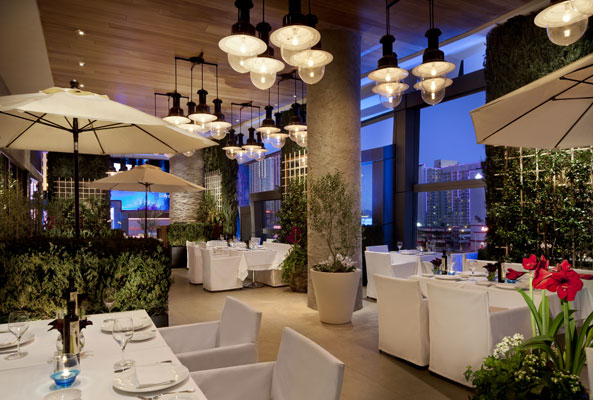 "In
Spain and Europe, even middle-class people are proud to spend their
money on
the best, fresh food from farmers and fisherman. But too many people
here [read: Americans] have gotten spoiled and now want everything
cheap."
So
said José Andrés (one of the chefs with the most food
cred in America
right now) to me as we discuss the most remarkable restaurant to open
in Las
Vegas in the past five years. Essentially, that restaurant is his
competition
-- sitting as it does a stone's throw from Jaleo (his new spot)
across the third floor of The Cosmopolitan -- in what will soon be
called The
Ultimate Gourmet Food Court by every gastronome in America.
"When you consider the freshness and
quality he is bringing to the table, his prices aren't really that high
at
all," Andrés offers, as he cuts up a quickly-fried egg for me
and mixes it
with Spanish caviar. "It is the way people who care about what they eat
do
around the world. Americans just need to be taught."
"In
Spain and Europe, even middle-class people are proud to spend their
money on
the best, fresh food from farmers and fisherman. But too many people
here [read: Americans] have gotten spoiled and now want everything
cheap."
So
said José Andrés (one of the chefs with the most food
cred in America
right now) to me as we discuss the most remarkable restaurant to open
in Las
Vegas in the past five years. Essentially, that restaurant is his
competition
-- sitting as it does a stone's throw from Jaleo (his new spot)
across the third floor of The Cosmopolitan -- in what will soon be
called The
Ultimate Gourmet Food Court by every gastronome in America.
"When you consider the freshness and
quality he is bringing to the table, his prices aren't really that high
at
all," Andrés offers, as he cuts up a quickly-fried egg for me
and mixes it
with Spanish caviar. "It is the way people who care about what they eat
do
around the world. Americans just need to be taught."
Our conversation was about Estiatorio Milos, taking place while José is (literally) dashing to and fro, kibbitzing with customers, gently berating waiters, and rushing by my spot at the tapas bar to pop the occasional deep-fried quail egg with artichoke or molecular olive into my mouth. The effect is like trying to interview Andrés Iniestia during a soccer match, but in between his Spanish-flecked patter and good-natured ribbing of this restaurant writer, he is full of admiration for what Chef-owner Costas Spiliadis is doing across the hall.
What
he's
referring
to
is
the
conceit
that
underlies
both
his
restaurant
and
Milos
--
that of exquisite food meant
to be
shared. Both restaurants eschew the "I'll have the Dover sole" form
of ordering in favor of making the ordering and eating of everything a
communal
experience. While Jaleo may trumpet its wacky, fabulous tapas served in
a
blizzard of small plates, Milos, as befitting the standard bearer for
the
culture that founded Western Civilization, prefers a more formal
approach. Both
restaurants are best experienced in groups of three to six-- the
better to enjoy a
variety of the bounty they offer, and at Milos, it's also the best way
to get
the most bang for your buck.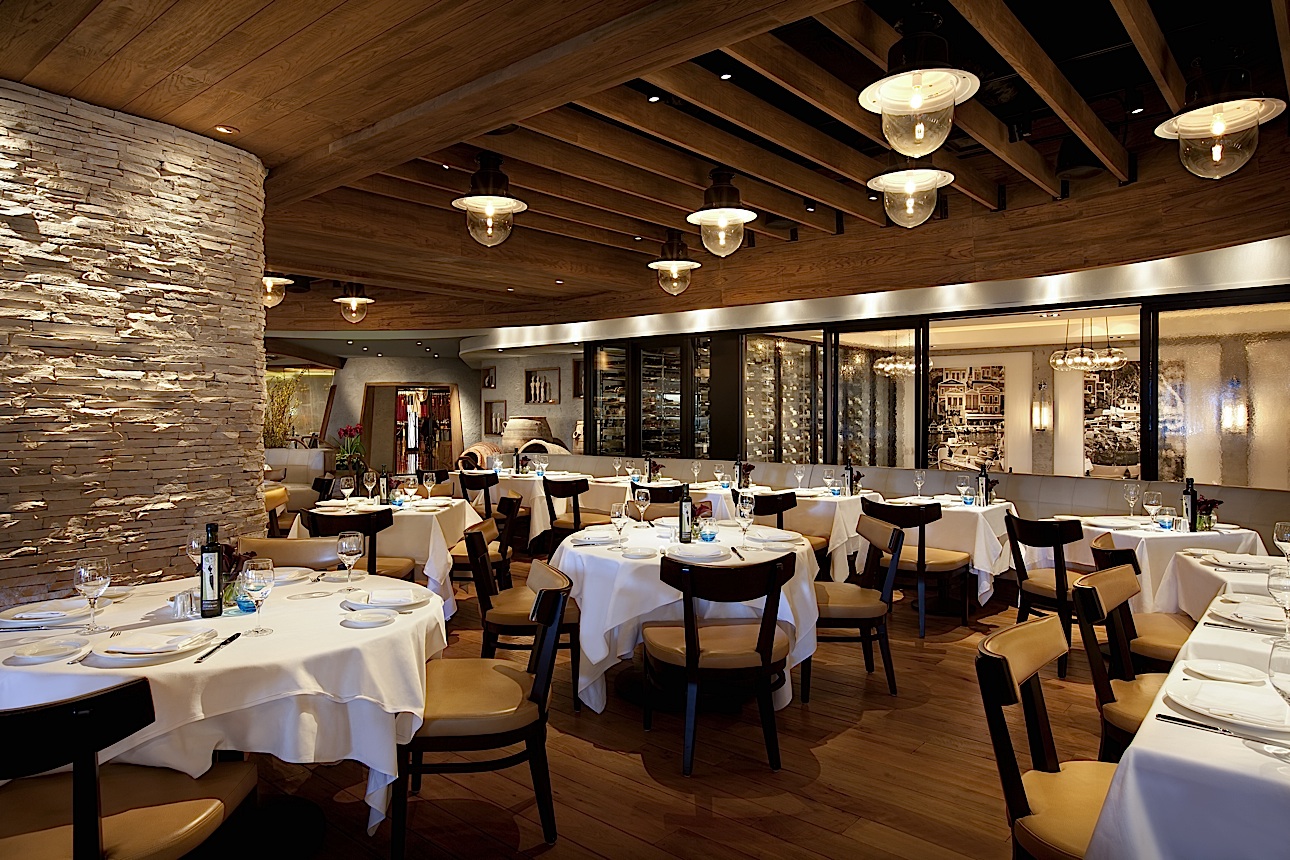
Consider this: a whole, three-pound fish will run your table around $150. (They don't serve fillets here, believing rightly, that flavor and freshness is lost by cutting up a fish before it is cooked.) Split two ways, both the cost and the amount of fish is more than the average couple would want to spend. Bring one or two more hungry souls to the table, though, and that pristine pisces now costs no more than the average strip steak. The same holds true for the appetizers and salads. The Eipirotaki salad -- a major mound of sliced cabbage dotted with dill, Bleu des Causses, and orange slices -- seems expensive at $16.50, but not if you split it four ways--and there is plenty to feed four. Thus are all items on this menu made for a table of at least three adults, making the price/person more than reasonable -- especially in the realm of high-end dining with such impeccable provisions.
Once you bite into a perfect piece of charred, slightly chewy octopus, or dip your lightly fried eggplant into a thick, tangy tzatziki sauce from another planet. Paper thin, fried zucchini accompany the eggplant in the "Milos Special," along with cubes of Graviera cheese saganaki. Crunch, cheese, yogurt and vegetables effectively becoming a celebration of all that is good and holy about the Mediterranean diet. Follow these with a platter of four spreads (tzatziki, fava, lemony hummus, and a silky taramosalata) and you'll start getting with the Peloponnesean program.
That program consists of a deceptively simple, two-page menu, with eleven appetizers on the left side, five salads and vegetables on the right, two Creekstone Farms steaks, Gleason Ranch lamb chops, and a single heading that says simply, "From The Sea." Under that heading are the entries: fish in sea salt, and Astakomakaronada (an Athenian lobster pasta for two that will set you back a cool $120). But the deliciousness of this place is in the fine print at the bottom of the menu, that refers you to Milos' "display" -- the huge fish/seafood/vegetable counter against the far wall, beside the open kitchen, where the day's catch is displayed for you to peruse and choose from.
Before you get to them, though, one appetizer is mandatory: avgotaraho aikieroto, aka bottarga, the famed roe of the Mediterranean gray mullet. One of the world's great delicacies, you will neither find nor taste a better version of this briny, nutty, haunting essence of the sea. Not too bad a deal for $32.
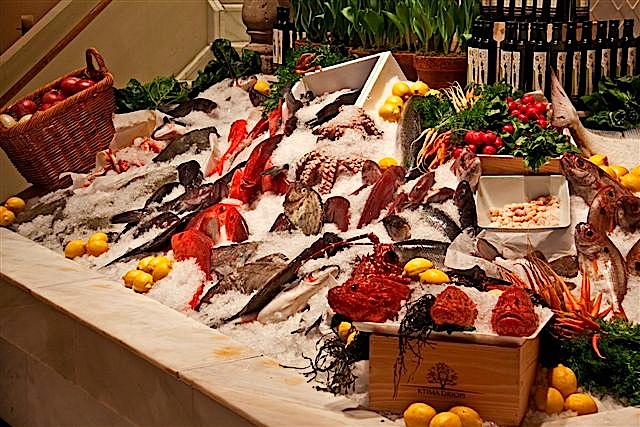 Of
the
whole
fish, they beckon to you like Poseidon's soldiers, begging to
be
eaten so their sacrifice was not in vain. After you are seated, your
waiter
will ask if you'd like to view the display -- a cagey marketing move
bent on
capturing an already captive audience -- and will take you through the
pedigree
of each fish as if each were a personal friend. Clear-eyed with
glistening
skin, each species is a wonder of the edible ocean so prized by seafood
aficionados. Order the lavraki (loup de mer) roasted under a crust
of Mediterranean sea salt (yes, even the salt comes from a certain
supplier
prized by Spiliadis), and you will get the whole show from Executive
Chef Pericles
Koskinas as he carefully chips away the crust, then rolls back
that skin
without breaking it, before portioning out the dense-but-soft, fragrant
flesh.
A few capers and a lemon/olive oil emulsion of unmatched intensity is
all you
need to appreciate your piece of perfection.
Of
the
whole
fish, they beckon to you like Poseidon's soldiers, begging to
be
eaten so their sacrifice was not in vain. After you are seated, your
waiter
will ask if you'd like to view the display -- a cagey marketing move
bent on
capturing an already captive audience -- and will take you through the
pedigree
of each fish as if each were a personal friend. Clear-eyed with
glistening
skin, each species is a wonder of the edible ocean so prized by seafood
aficionados. Order the lavraki (loup de mer) roasted under a crust
of Mediterranean sea salt (yes, even the salt comes from a certain
supplier
prized by Spiliadis), and you will get the whole show from Executive
Chef Pericles
Koskinas as he carefully chips away the crust, then rolls back
that skin
without breaking it, before portioning out the dense-but-soft, fragrant
flesh.
A few capers and a lemon/olive oil emulsion of unmatched intensity is
all you
need to appreciate your piece of perfection.
Most of these swimmers are also offered raw, and while the presentation won't make any sushi chef jealous, the sparkling fineness of the meat will have you questioning what you ever saw in tuna tartare.
Landlubbers will feel right at home as well, since the provenance of the lamb chops (Gleason Ranch Sonoma) and the beef (Creekstone Farms) is as impeccable as their seasoning and roasting. We were lying in the weeds for those chops, expecting the same old, denuded, tasteless lamb that has become de rigueur in American restaurants ever since New Zealand figured out a way to sell frozen lamb by making it taste like de-natured beef. Instead, a big platter of chops arrived (again, enough for four), just to the medium side of rare -- instead of the other way around -- best showcasing their intense, lamb-ness.
There is a serene elegance to Milos, whose original is in Montreal and branches in NYC and Athens, that strikes as soon as you enter the low-ceilinged, softly lit space, and continues throughout every refined, discriminating ingredient and taste placed before you. From a simple plate of lemon-grilled heli (eel) to the sweetest, thickest, creamiest goat's milk yogurt circled with the best, thyme-infused honey you have ever tasted, this cuisine walks the walk of the best ingredients treated with the utmost respect.
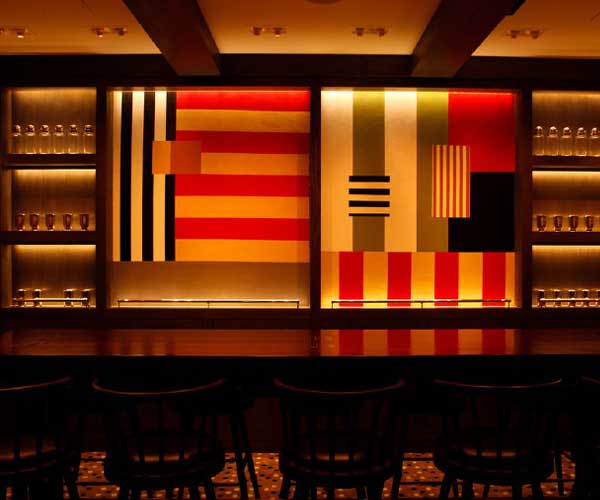 comme ça
comme ça
3708
Las Vegas Blvd. South
702-698-7910
The most interesting thing about Comme Ça (pronounced "kohm sah," meaning "like that") is that it isn't afraid to challenge nearby Bouchon and Mon Ami Gabi at their own game, that is, classic French bistro food. That Comme Ça thinks it can do so within a stone's throw of one and just a half mile from the other is a testament to the confidence of a baby-faced Californian chef named David Myers. After contemplating all this Gallic competition, you'll next notice CC's classic menu -- straight from the Rive Gauche in Paris: steak frites, omelets, soupe à l'oignon, steak tartare, that is a dead ringer for much of the same fare at the other two. The third thing you'll notice is the more aggressive seasonings Myers brings to that highly similar fare, like his steak tartare, and finally, after noticing all of those things, you'll see that everything seems to be being done on a slightly higher, and tastier plane than at Mon Ami Gabi (no small feat that), and can compete, tartare to tartare with anything Bouchon can throw at you.
After
you've
taken
notice
of
all
that,
then
swooned
over
your
crispy
skate
wing
Grenobloise
-- sharply accented by capers
and lemon, and bathed in brown butter -- and sat up and savored every
last lardon in your salad
frisée, you'll get knocked out by how fantastic
the burger
and fries are. Those
fries are twice-fried in peanut oil, crisping them to a fare thee well,
while
allowing a 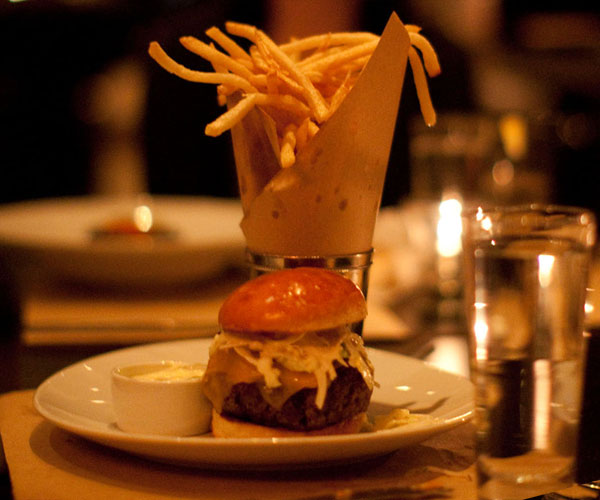 strong
potato
flavor
to
burst
from
within.
Dusted
with
some
fleur
de
sel, they are as addictive as any fries in town and could foil
Bouchon's in
a french fry face-off. That burger is a flat out, mineral-rich, beefy,
juicy
delight, on a gorgeous lacquered bun, and dripping with good cheese. In
a town
now dripping with good ground beef, it is one of the best.
strong
potato
flavor
to
burst
from
within.
Dusted
with
some
fleur
de
sel, they are as addictive as any fries in town and could foil
Bouchon's in
a french fry face-off. That burger is a flat out, mineral-rich, beefy,
juicy
delight, on a gorgeous lacquered bun, and dripping with good cheese. In
a town
now dripping with good ground beef, it is one of the best.
Equally arresting are the chicken diable and cheesy onion soup, along with a tarte flambé that even Hubert Keller of Fleur de Lys would have to admire. When a dining companion ordered the chicken diable at one of our lunches, we scoffed at her pedestrian choice. Two bites later, and we were converts: its peppery crust might not pass muster in Paris (Parisians run away at the mere mention of a hot pepper), but provides a nice, multi-cultural kick to a superior piece of chicken meat. The basil and mustard sauces might also curl a Frenchman's toes, but were carefully rendered and disappointing only in there not being more of them.
I
admit
to
being
a
little
biased
towards
bistro
food
–
having
probably
spent
more
time in Parisian bistros that most
people
spend in restaurants their entire lives -- but to these taste buds, it
is the
best everyday food in the world, and Myers’ renditions of these
classics are so
spot on, you could take them to the Left Bank. By the way, CC is an
offshoot of the Los Angeles original.
AND ONE MORE OFF THE STRIP. . .
RAKU
5030 W.Spring
Mountain Rd #2
702-367-3511
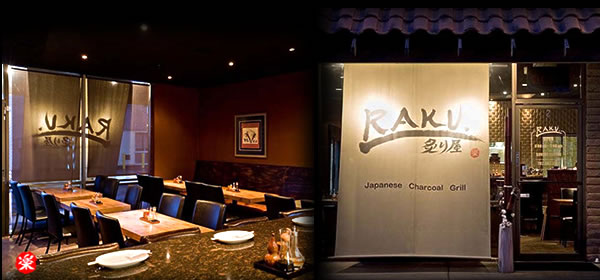 The three
questions I
hear most as a restaurant critic are: How did you become one, how many
times a
week do you eat out, and, how do you not weigh 300 pounds? There is
almost
always a fourth question that follows closely on the heels of those
three and
it is: What is the best restaurant off
the Strip? For the record, the answers
are: It’s a long story, ten times a week, and I have the metabolism of
a
hummingbird. The answer to the fourth question is easy: Aburiya Raku.
The three
questions I
hear most as a restaurant critic are: How did you become one, how many
times a
week do you eat out, and, how do you not weigh 300 pounds? There is
almost
always a fourth question that follows closely on the heels of those
three and
it is: What is the best restaurant off
the Strip? For the record, the answers
are: It’s a long story, ten times a week, and I have the metabolism of
a
hummingbird. The answer to the fourth question is easy: Aburiya Raku.
The name means “Charcoal House Enjoyment,” and from the minute it opened in May, 2008, gourmands of all stripes have flocked here to taste Chef/owner Mitsuo Endo’s precise renderings of robata-cooked food. For the uninitiated, robata or robatayaki cooking is a simple yet sublime form of charcoal grilling, using Japanese oak charcoal to cook vegetables, fish, and meat around a small, pyramidal, glowing pyre of bright orange logs. But this charcoal house does not live by grilled foods alone. Endo’s house-made, fried, agedashi tofu and foie gras soups have become legendary, and legendary is what his kaiseki dinner is about to become.
A kaiseki dinner is Japanese eating at its most structured, complex and beautiful. Japanese chefs consider it an art form balancing all the senses with the color, appearance and texture of its multiple courses. Everything from the seasonal ingredients to the serving vessels they come in (or on) must complement and build upon your total immersion in the dishes and techniques of the chef. No detail is ignored, nor considered too small to perfect. It is to traditional, barbaric western eating (giant slabs of protein, huge bowls of starch) what heavy metal is to haiku.
To
put
you
in
the
mood
for
the
delicacies
to
come,
Endo
begins
this
three-hour
feast by
presenting
what looks like a child’s wooden toy. Your server instructs you to push
the
fresh Takigawa tofu through the box and into a bowl by pressing on the
wooden
handle, and presto – ribbons of soft, silky curd magically drop into a
pristine
broth of sweet/savory intensity. Next, a platter is presented
containing sweet,
marinated smelts (ayu nanbantsuke) alongside a tiny whole
crispy crab (meant to
consumed whole), asparagus coated in crispy rice cracker crumbs, and
tofu
topped with salmon roe – each bite harmonizing with what has come
before and
afterward. 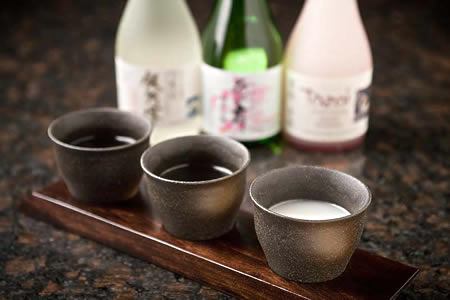
From there a dobinmushi clear soup of pike eel, chicken, shrimp and ginko nuts, then sashimi of almost Bar Masa-like freshness, followed by wooden spoons upon which rest two circles of tofu – one seasoned with green tea sea salt, the other with a grapeseed, balsamic soy glaze. Even as Endo ratchets up the protein – with a foie gras egg custard that will bring tears to your eyes, and an ebishinjo (shrimp) soufflé suffused with a hidden, umami depth charge of uni (sea urchin) – he is careful to keep anything from coating your palate with fat, or sticking to your ribs with starch -- the better to keep your senses heightened at all times.
The seven different sakes poured during the feast also help, rather than hinder, your appreciation of each mind-blowing course. The other animal proteins making an appearance are Kobe beef fillet seared on hot stones and flamed with cognac -- homage to the world’s greatest beef – and gamy, funky, softshell turtle meat encased in a gray-green turtle aspic that made for the single strangest thing we’ve tasted in years.
Even
if
you
can’t
stand
gurgling
down
some
Yertle,
this
food
will
work
its
magic
on you.
Japanese
food can be subtle to the point of invisibility, but Endo’s kaiseki
dinner
highlights this love of delicacy while bringing forth enough strong
flavors to
captivate his American eating audience. It is a Japanese food education
in
fifteen courses.
The kaiseki dinner must be ordered in advance by calling the restaurant. Depending upon the number of courses and types of sake ordered, the cost will run approximately $75-$150/person. Open for dinner Mon.-Sat.
Part Two of
Dining in Vegas will appear next week.
❖❖❖
NEW YORK CORNER
by John Mariani
JOHN DORY OYSTER BAR
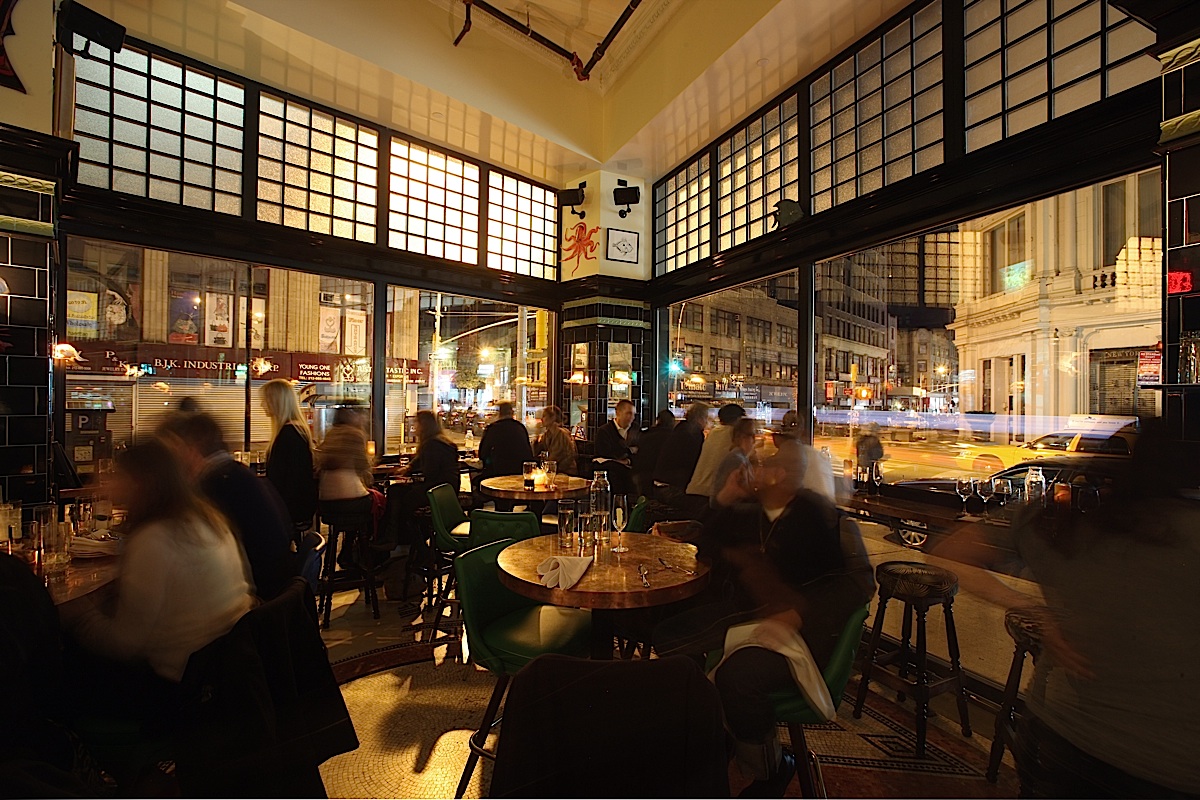
1196 Broadway (at 29th Street in the Ace Hotel)
212-792-9000
thejohndory.com
Ken Friedman and chef/partner April Bloomfield's Spotted Pig in Greenwich Village kicked off the gastro-pub fad a few years back, and the little corner eatery in Greenwich Village hasn't had any empty table since. So, too, their next venture, The Breslin, has had customers clinging to the rafters to get a table. It was with some puzzlement, then, that their first John Dory restaurant in Chelsea did not fare well, despite good reviews. It closed in 2009 with the promise of a relocation: John Dory Oyster Bar, in the Ace Hotel, delivers on that promise.
It is not--how does one say?--a full-fledged restaurant, insofar as it takes no reservations, has only high tables and chairs, no main courses, and no bread is brought to the table. The waiters seem to dress as they please, as do customers. The décor resembles higher end pubs and seafood houses in London, with aquarium globes holding live fish, marine objets d'art around, but no soft surfaces whatsoever. This means the place gets very, very loud, and they pump up the jam after 9 PM. So what exactly is the appeal of John Dory Oyster Bar? Well, it's the food itself, served up by an amiable crew that starts with a warm welcome at the hostess station, where you will usually be told there is going to be a wait for a table. In midweek, this does not seem an agonizing problem, but on weekends you'll be standing at the bar for quite a while. A very sensible wine list--neither too big nor too small, with some good bottlings under $50, though not many--has been put together by the vivacious sommelier Carla Rzeszewski (left), whose guidance you should take about what goes best with that on the menu.
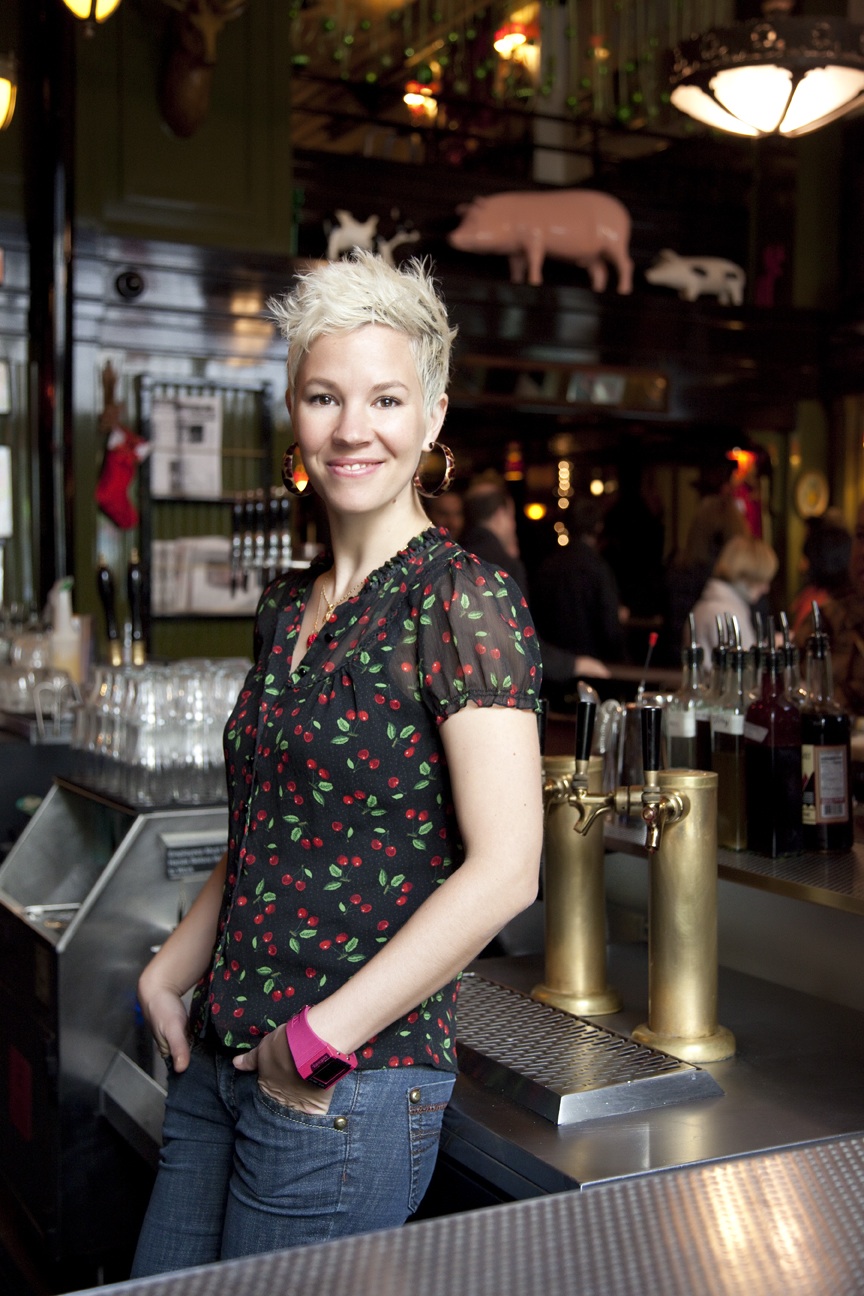 The menu is short, categorized as Crudo, Raw
Bar, Bar Snacks, Small Plates, and Dessert. There isn't any
pretense about anything here, and if you're up for a good nosh with
friends, John Dory Oyster Bar can be a lot of fun. The bar snacks
are not jimmy sticks and potato chips: they are items like
parsley-anchovy toast, chilled crab and avocado, and Parker House rolls
with char pate. You can also get these terrific Parker House rolls on
their own, for $4.50, but it seems a little chintzy to charge for
bread. You can also spend $3.50 on roasted peanuts with garlic
and rosemary, which are pretty addictive.
The menu is short, categorized as Crudo, Raw
Bar, Bar Snacks, Small Plates, and Dessert. There isn't any
pretense about anything here, and if you're up for a good nosh with
friends, John Dory Oyster Bar can be a lot of fun. The bar snacks
are not jimmy sticks and potato chips: they are items like
parsley-anchovy toast, chilled crab and avocado, and Parker House rolls
with char pate. You can also get these terrific Parker House rolls on
their own, for $4.50, but it seems a little chintzy to charge for
bread. You can also spend $3.50 on roasted peanuts with garlic
and rosemary, which are pretty addictive.Start off with those raw specimens, from sea trout tartare with crème fraîche and caraway to hiramasa (amberjack) with sprightly ginger. The night I visited they had sweet Nantucket bay scallops, and with just a little lemon and olive, they were superb, served at just the right temperature at their peak of flavor, though they may not always be available in what is always a too-short season.
From the Raw Bar comes a wide array of seasonal oysters big and small, east and west, and since the one thing in the world I seem allergic to is oysters, I'll take my friend and colleague, Peter Meltzer of Wine Spectator to pronounce the six or more species he sampled first rate. Chilled Dungeness crab was plenty meaty, and you have to dig for the fattest parts in the body cavity. Chilling does not,
 however, really help with this shellfish.
however, really help with this shellfish. The small plates live up to their name--with none more than $16--so sharing is not easy. There's a fine, creamy crab and coconut soup, and the tender grilled octopus with potatoes and garlicky aïoli is as good as it gets. There is also a panade, a term not often seen on American menus or, these days, even on French menus, where it is usually spelled panada. It describes any of a range of pastes used to thicken forcemeats or a soup made from bread, stock, milk and butter. At John Dory Oyster Bar the stock is lobster, and the bread soaks up all the flavors, rather like an onion soup. The night I sampled it, however, salt nudged out the rest of the flavors.
There are a few simple desserts, and you should try the Eccles cake, made with a short pastry and dotted with currants (which also gives the dessert one of those unsavory Brit colloquialism--"squashed fly cake"), which apparently originated in the English town of Eccles.
John Dory Oyster Bar is all that it wants to be, and for a casual meal, the food is very good. Its current success may put off those who have little patience with waiting, and a ten-dollar taxi to and from makes such waits even more unpleasant. But know all that beforehand, go with a couple of good friends early or late, have a cocktail or a beer at the bar, and you'll have a good time without too much expense.
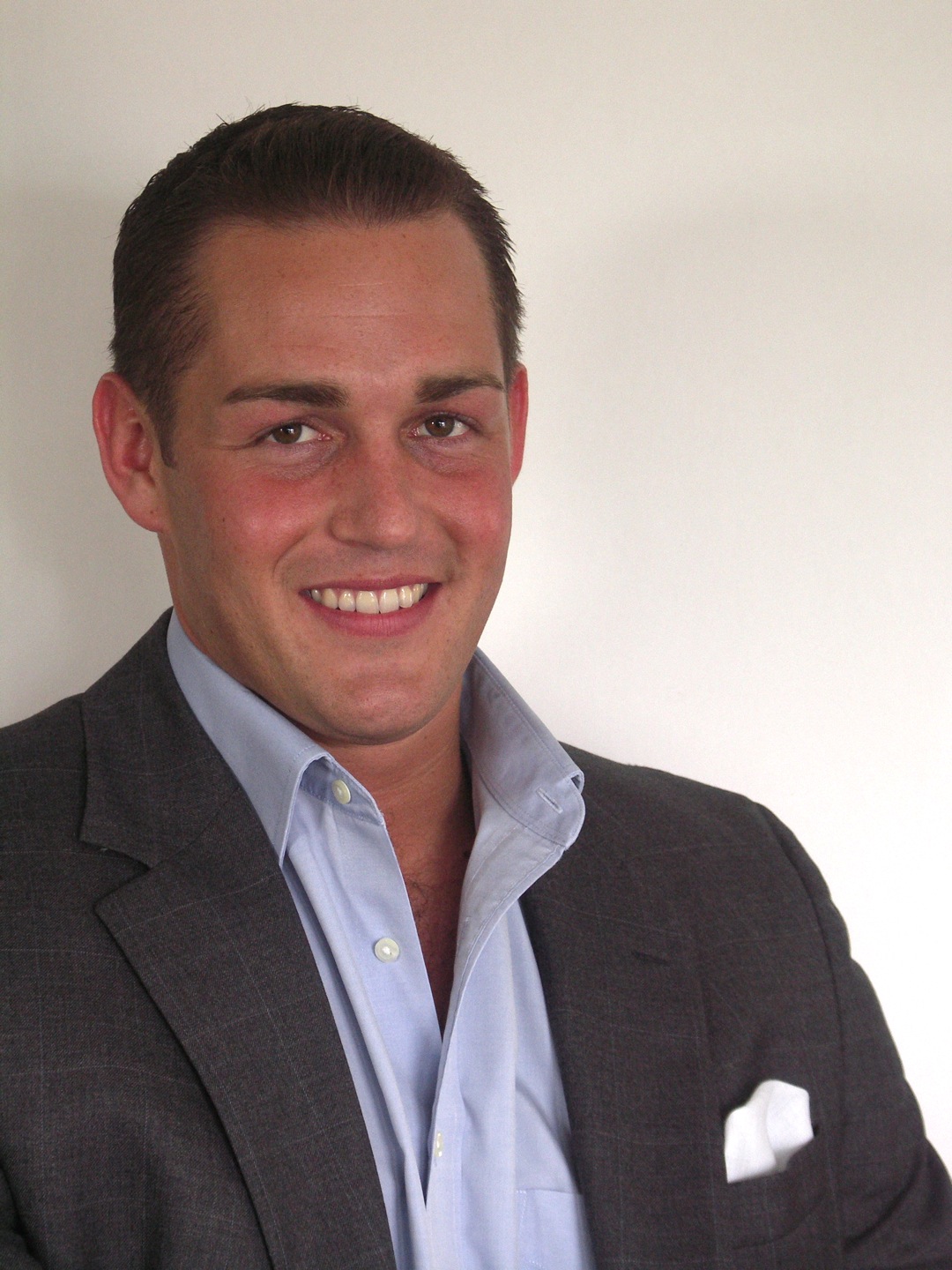
MAN ABOUT TOWN
by Christopher Mariani
Photos by Louis Sahuc
Galatoire's Restaurant
 Bourbon
Street appears slightly different in broad daylight than it
does during
the tail end of an untamed Thursday night fueled by Hurricanes,
Jesters
and Hand Grenades, just a few of the potent yet easy-to-drink cocktails
served
throughout the Quarter. I should know, I was there. A late night on
Bourbon may
not be for everyone, but it is definitely worth experiencing once in
your life.
Nestled in between the neon beer signs, endless T-shirt shops, bars and
gentlemen’s club is Galatoire’s, a true New Orleans restaurant. A
lunch
at Galatoire’s is as restorative as the breeze off the Mississippi.
Bourbon
Street appears slightly different in broad daylight than it
does during
the tail end of an untamed Thursday night fueled by Hurricanes,
Jesters
and Hand Grenades, just a few of the potent yet easy-to-drink cocktails
served
throughout the Quarter. I should know, I was there. A late night on
Bourbon may
not be for everyone, but it is definitely worth experiencing once in
your life.
Nestled in between the neon beer signs, endless T-shirt shops, bars and
gentlemen’s club is Galatoire’s, a true New Orleans restaurant. A
lunch
at Galatoire’s is as restorative as the breeze off the Mississippi.When asked what makes Galatoires so wonderfully unique, I respond, “The answer is easy, it is the hospitality, service and food.” That may seem like a fairly typical answer to what makes for any good restaurant, but few are this good anywhere. Galatoire’s, along with nearby Brennan’s on Royal Street, offers each and every customer a feeling of importance. When you walk into either restaurant, you will be immediately approached with a smile and treated as if you were somebody of magnitude, southern hospitality at its finest. There is a common respect between Galatoire’s and its guests, a bond which has been formed over decades of consistency and tradition.
Friday lunch is the prestige day to eat at Galatoire’s, a day when reservations are taken only for the upstairs dining room. It is not unusual for longtime regulars to pay surrogates to line up outside at six a.m. to assure a downstairs table at half past eleven. The downstairs dining room has never accepted reservations and never will; it is strictly first come first serve. Guests literally huddle and eagerly wait outside until the doors finally open and then quickly shuffle inside to claim their table. All diners are dressed impeccably, men sporting their best blazers, shirts and ties (many with bow ties), pocket handkerchiefs sticking up out of almost every jacket pocket, and most men flaunting a Panama planter’s hat, of course, removing it before sitting down. (By the way, Meyer The Hatter is heralded as the best hat store in New Orleans.) Every woman, peacock in spirit, is propped up on high heels, wearing a colorful dress, showing off her finest and most expensive jewelry, her hair looking as good if not better than on the day of her wedding. It is a statement to be seen at Galatoires on Friday for lunch, and many of the
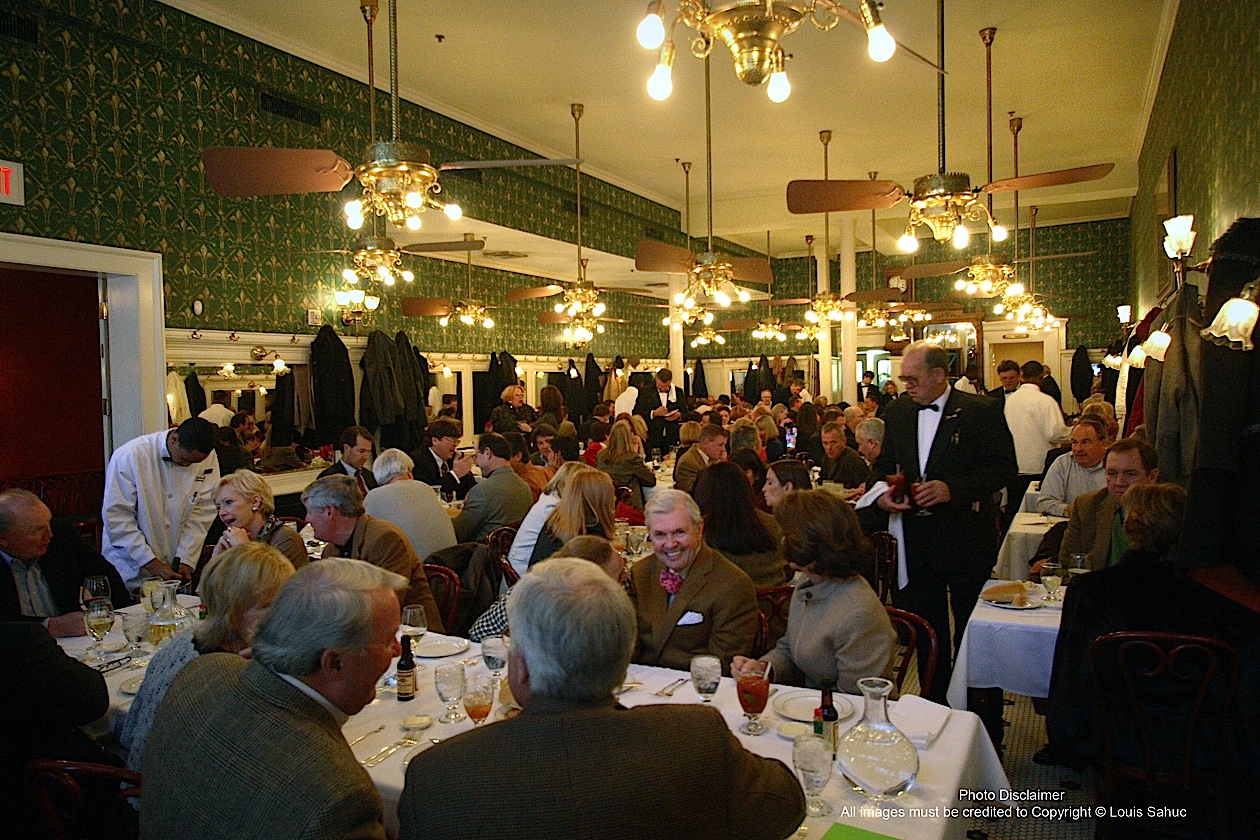 customers
have
not
missed
a
lunch
in
over
20
years.
customers
have
not
missed
a
lunch
in
over
20
years.
The clientele is an absolutely wonderful complement to the elegant and classic décor. Starched white cloths gracefully drape each table, silverware appears to be polished before each service, the walls are blanketed by gleaming antique mirrors and the waiters all wear black tuxedos. The entire service staff is made up of professionals, men of a certain age who have decades of experience under their belts. They take pride in their craft and are as important to Galatoire's as is the executive chef or maître d'. Without taking a glance at your menu, you can easily have a 15-second conversation with your waiter and feel confident that he will bring you exactly what you want. If they have it, they will serve it, no “let me check with the kitchen” responses here. Most waiters will have either a trace or an abundance of an unmistakable New Orleanean accent, a small but notable charm that adds character to the experience.
The menu is filled with lush portions of fresh lump crabmeat, fried shrimp, oysters and seasonal crawfish, some covered with Hollandaise, others a rémoulade. I started with a mound of rich crabmeat maison; sautéed crawfish in a cocktail sauce with a strong presence of horseradish; shrimp etouffée and the season’s first taste of fried softshell crab. The meat in each bite was succulent and full of a distinct flavor found only in Louisiana. The portions at Galatoire’s are generous and meals are not meant to be rushed. It is typical for guests to linger until 4 p.m. after arriving hours earlier, ordering more food and more wine.
For entrees we ordered a plate of fried shrimp and the sautéed pompano smothered in rich, buttery sliced almonds with a touch of lemon. The food at Galatoire’s is simple. There is no manipulation of ingredients. They start with great ingredients and finish with great food. For dessert, order the bananas foster, a dish actually created at nearby Brennan’s.
There was a time when Galatoire’s seemed like it was coasting, resting on its considerable reputation and a crowd as faithful as a Catahoula to its master. But after some finessing by new partners, the place itself looks as if it had opened yesterday, and the kitchen has never turned out better food, now among the finest in New Orleans.
There is a timeless feel to Galatoire’s that is difficult to find anywhere outside of New Orleans—even in New Orleans it is a rarity-- especially in restaurants across the country that tend to quickly jump on the trendy bandwagon in an attempt to stay modern. Many restaurants continuously go in and out of style, names and menus changing yearly, yet Galatoire's has been doing what they do best, serving real food and offering nonpareil service, and I suppose that is why they have had a line out the door since opening in 1905. It makes you wonder if being stylish and hip is really all that cool?
by John Mariani
I won’t tell you to pour your five-year-old white wines down the drain, but if you don’t drink them ASAP, you may well want to.
The simple fact is, 99.9 percent of all the white wines in the world do not age well after a year or two and are at their best upon release, which may very well be the springtime after the autumn harvest.
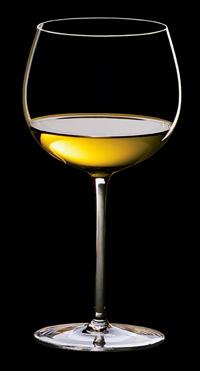 This was
brought into focus for me yet again after tasting a
bottle of 2008 La Follette Manchester Ridge Chardonnay from Mendocino
Ridge. At
$48 it is among the pricier California chardonnays; at 15 percent
alcohol it is
also one of the most potent.
This was
brought into focus for me yet again after tasting a
bottle of 2008 La Follette Manchester Ridge Chardonnay from Mendocino
Ridge. At
$48 it is among the pricier California chardonnays; at 15 percent
alcohol it is
also one of the most potent.
It’s a big wine, well made in the bold California style, not too much oak, but I felt the wine, now less than two and a half years old, was not going to get any better in the bottle. There may have been some oxidation or it may be going through what is called in the trade a “dumb” period when some wines hibernate and later flourish.
So while I enjoyed the wine with a fillet of simply grilled red snapper, I was glad I didn’t have a whole case of it in my cellar. More and more with white wines, I’m drinking them as soon after I buy them from the wine store as possible. And believe me, if a wine store is selling—always at a discount—a white wine more than three years old, you can bet it’s because it hadn’t sold very well upon release.
My views on this subject are certainly not lost on the vast majority of winemakers around the world who never give much thought to aging their white wines for more than a few months or a year in the first place. I have, of course, had impressive examples of muscadet, pinot blanc, chardonnay, gewürztraminer, and riesling several years old, and the greatest of all German riesling dessert wines are aged for many years and can be drunk with delight even decades later.
One of the white wines
I’ve always been amazed by, which I’ve written about here, is
Valentini’s Trebbiano d’abruzzo, a varietal made in huge bulk by other
producers and
disdained by many in Italy as nothing but a workhorse white. Somehow
Valentini
manages to make his trebbiano long-lived, 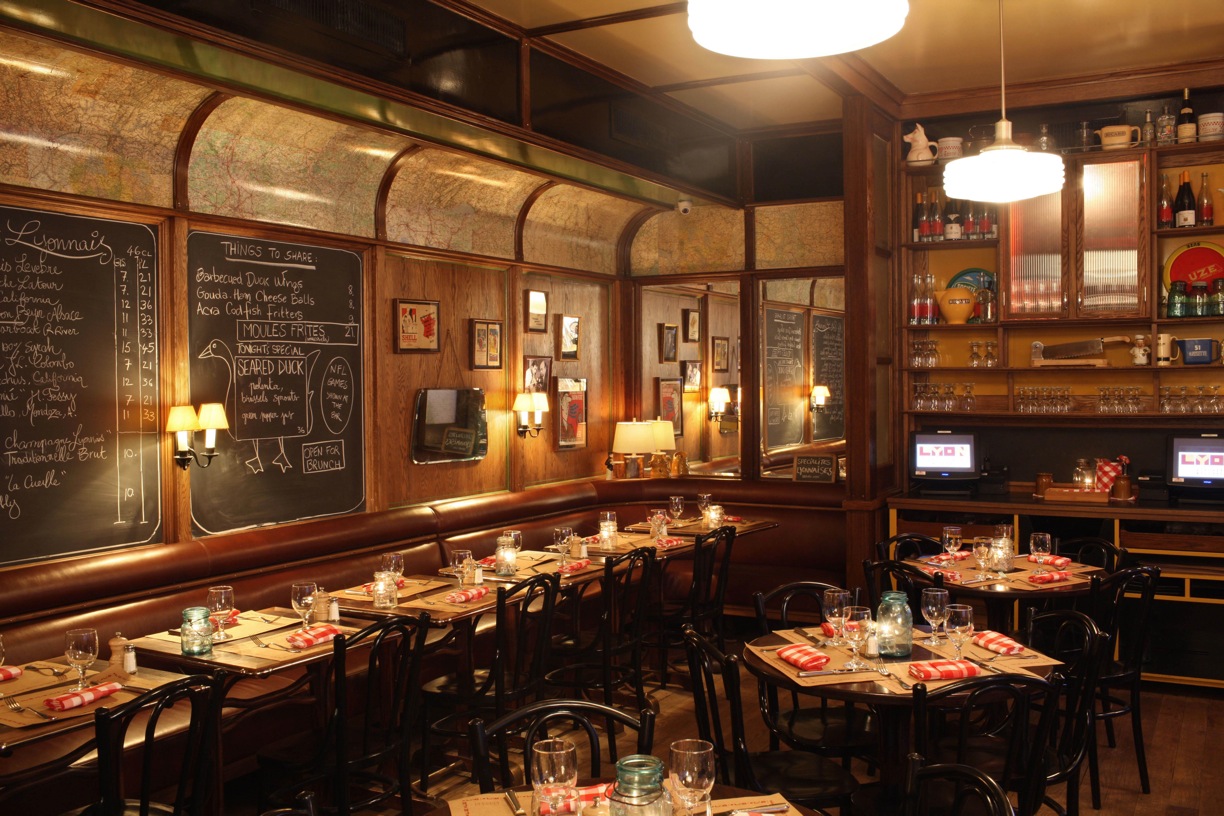 and I’ve had bottles a decade old
that are still brilliant.
and I’ve had bottles a decade old
that are still brilliant.
So, too, connoisseurs and producers of the finest white Burgundies insist that the very finest, like Puligny-Montrachet, Batard-Montrachet, and the rare Montrachet itself (which sells for about $2000) need at least three and perhaps even ten years of aging to achieve true maturity. Even then I’m skeptical and have no plans to wait that long, even if I could afford such prices. It’s almost a moot point, though, since these wines are such rarities that they are well beyond all but a Hong Kong wine auction bidder’s budget.
The Brits have long exhibited a preference for what they call an “onion skin taste” of old vintage Champagnes, which comes from a certain amount of oxidation, which does nothing for my palate. I have tasted some fine old vintage Champagnes and applaud their longevity, but I much prefer younger, vibrant examples precisely because they are so fresh and blooming with fruit and acid.
In any case, most people don’t order expensive ancient white wines, especially in more casual restaurants, like New York’s new Lyon Bistro (right), where the best-selling wines are sauvignon blanc and French chardonnay. “I personally love old Chablis,” says owner Francois Latapie, “but I don’t have the clientele for it here. They do like St. Véran, Macon, and Alsatian riesling, and the vintages I stock are the most recent, 2009 and soon 2010.”
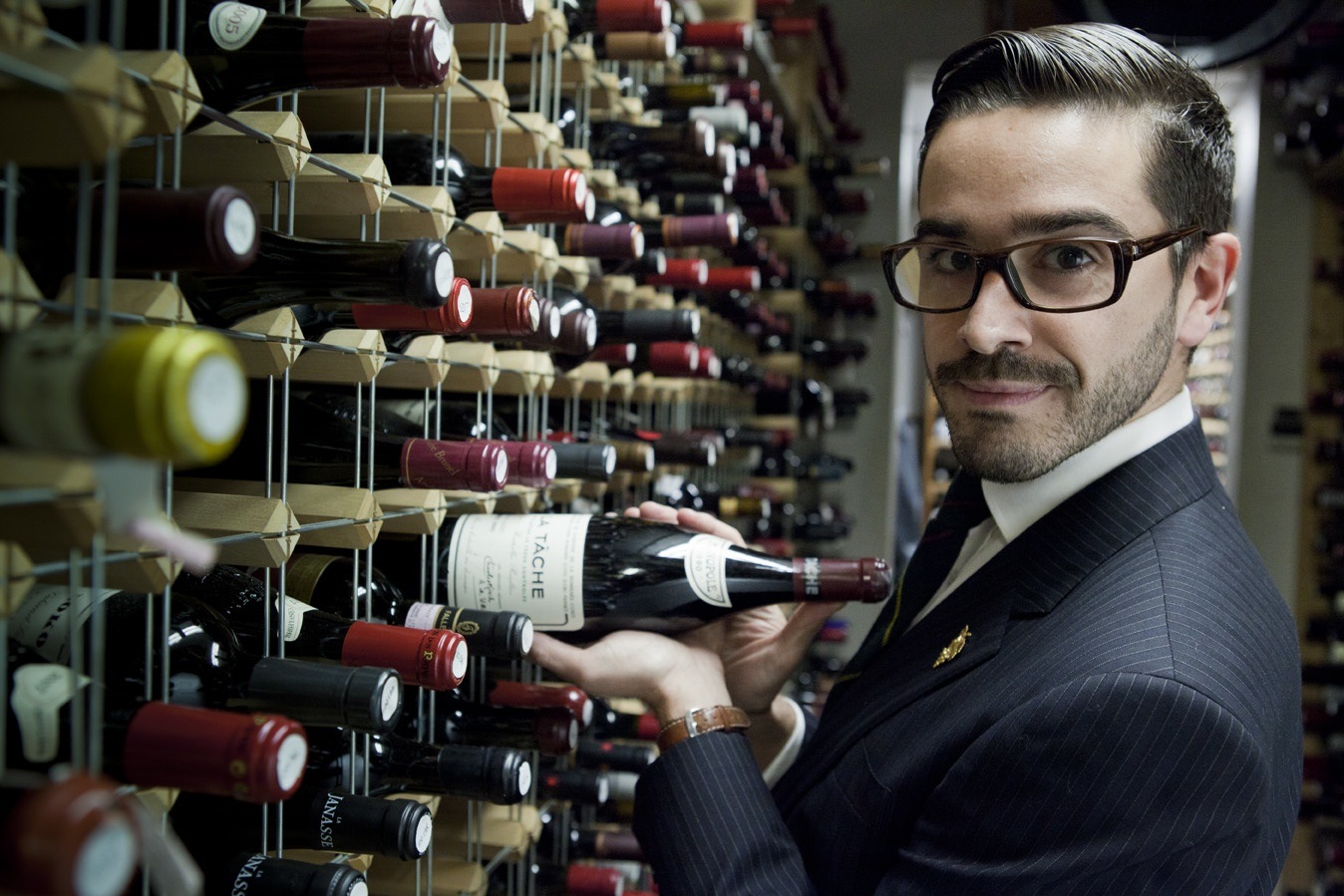 There are, however,
fine dining restaurants that proudly toe the line for older white wines. “I look for wines that have phenomenonal
mineral force, concentration of fruit and can benefit from aging,” says
Ruben
Sanz Ramiro (left), sommelier
at New York’s Veritas
restaurant, which stocks 3200
labels and 75,000 bottles, 25 percent of them white.
“They become better integrated and complex aromatically.
We
have old white burgundies and even California chardonnay going back to
the
1970s—Stony Hill, Chalone, Mount Eden. They are absolutely sound, with
extraordinary acidity that protects the wines over time. In most cases,
when I
recommend them, in most cases, our guests are really pleased and
surprised.”
There are, however,
fine dining restaurants that proudly toe the line for older white wines. “I look for wines that have phenomenonal
mineral force, concentration of fruit and can benefit from aging,” says
Ruben
Sanz Ramiro (left), sommelier
at New York’s Veritas
restaurant, which stocks 3200
labels and 75,000 bottles, 25 percent of them white.
“They become better integrated and complex aromatically.
We
have old white burgundies and even California chardonnay going back to
the
1970s—Stony Hill, Chalone, Mount Eden. They are absolutely sound, with
extraordinary acidity that protects the wines over time. In most cases,
when I
recommend them, in most cases, our guests are really pleased and
surprised.”
You take a chance with every bottle of wine you open—some might be corked, others oxidized by accident—which is why a good wine steward is critical when ordering expensive wines in a restaurant. But with whites, youth trumps age most of time, which is why, when a waiter at Napa & Co. in Stamford, CT, recently apologized because the bottle of Spanish albariño I ordered was a younger vintage than the one on the list, I just smiled and said, “Even better! Let’s see how it tastes."
❖❖❖
YEAH, SURE
According to
a London poll, more than half
of British women pay for themselves on a first date, even though men
still want
to pay. Only a
quarter of women
said that they thought men should pay for a first date, while three
percent
said they themselves should foot the bill. Fifty-five percent of the
men expected to
pay the full bill on a first
date, with 41 percent of the men using
discount vouchers on a first date.

HEAR YE, HEAR YE, THE COURT WILL NOW HEAR THE
CASE OF THE GUY WITH A SHRIMP IN HIS PANTS
In Dover, PA, 37-year-old
Brian McDaniel
allegedly stuffed a bag of frozen
shrimp down his pants then attacked a grocery
store security guard, who sustained
minor injuries. McDaniel was
caught in the store's parking lot by the security guard and
a bystander. He is being held on $10,000 bail.
❖❖❖
|
Aubergine
On the first Tuesday of the the month throughout 2011, Aubergine in Carmel, CA,
will host a "Food for Thought" dinner. Chef Justin Cogley and pastry
chef Ron Mendoza will focus on one seasonal ingredient at each of the
four-course dinners, to be paired with wines. The price is $75 per
person. Telephone 831-624-8578 or visit www.laubergecarmel.com |
Southern
Food
and
Beverage
Museum
On April 15 the Southern Food
and Beverage Museum will hold a party to celebrate the opening of
Barbecue Nation, an exhibit that explores the roots and variations of
barbecue in the American South. On April 16 the museum will host Troy
Gilbert as he signs his newest venture, the Cafe Degas Cookbook. Both
events are free and open to the public. For more information contact
info@southernfood.org or 504-569-0405. |
|
Area 31
Restaurant
On April 15 – 22, Area 31 in Miami, FL will feature a special
five-course, organic tasting menu created by new Executive Chef E.
Michael Reidt. The tasting menu is $55 with organic wine pairings for
an additional $35 plus tax and gratuity. For reservations call
305.424.5234 or visit www.area31restaurant.com.
|
Chicago
q
On April 18, Chicago q in Chicago will offer a tax day
special featuring a decadent three-course prix-fixe menu for lunch
($15) and dinner ($18) including House Bacon Cheddar Hush Puppies,
Smoked Dry-Rubbed Wings, Pulled Pork or Kobe Brisket Sandwiches for
lunch, and Half Slab Baby Back or St. Louis Ribs for dinner. Call
312-642-1160 or visit www.chicagoqrestaurant.com |
|
Real
Urban
Barbeque
On April 18, Real Urban
Barbecue in Highland Park, ILL,
will
celebrate
Passover
by
offering
Seder
dinners
for
12
guests.
Available
for
carryout,
these
meals
will include your choice of 1 appetizer, 1 meat,
and 2 sides from Chef/Owner Jeff Shapiro’s arsenal of smoked meats,
including his famous beef brisket, and traditional Jewish
delicacies.
$165/package. Call 244-770-4227 or visit www.realurbanbbq.com |
Capsouto Freres
On April 18 and 19 in NYC, Capsouto Freres will host
special Sephardic
(non-Kosher) Seders for Passover. A Cantor will conduct the
Seders,
and the dinner is a benefit for The American Jewish Joint Distribution
Committee. 100% of the proceeds will go to charity. $150 pp donation.
To reserve call 212-966-4900 or visit www.capsoutofreres.com. |
|
HENRY's
On April 19 in NYC, Chef Mark Barrett will
prepare a Seder Plate and a
Three Course Traditional Passover Dinner at HENRY’s on the Upper West
Side on the second night of Passover. Call 212-866-0600 for
reservations or visit www.henrysnyc.com. |
Brookline
Booksmith
On April 19 at Brookline
Booksmith in Boston,
Melissa Coleman will read
from This Life Is in Your Hands: One Dream, Sixty Acres, and a Family
Undone, a memoir that takes place during the early days of the natural
living and organic food movements. Brookline Booksmith 617-566-6660, or
visit www.melissacoleman.com |
|
L'Auberge
Chez
Francois
On April 20 – L’Auberge Chez
Francois in Great Falls, VA,
celebrates
their
35th
anniversary.
In
1976
restaurateur
François
Haeringer
reopened
his
famous
restaurant
among
the
rolling green hills of Northern Virginia. To commemorate that
auspicious beginning 35 years ago, L’Auberge Chez François will
offer
all wines on the menu, including their vintage special cellar
selections, at a 50% discount during lunch and dinner on Wednesday,
April 20th. Go to www.LAubergeChezFrancois.com,
or
www.OpenTable.com
or
by
calling
703-759-3800 |
Spenger's Fresh
Fish Grotto
On April 21 in Berkeley, CA, Spenger's Fresh
Fish Grotto hosts a wine-paired dinner with a five-course prix fixe
menu prepared by Chef Patrick Kehler. $50 pp. Call 510-845-7771 or
visit www.spengers.com. |
|
Corner
Bookstore
On April 21 at Corner
Bookstore in New York, NY,
Melissa Coleman will
read from This Life Is in Your Hands: One Dream, Sixty Acres, and a
Family Undone, a memoir that takes place during the early days of the
natural living and organic food movements. Corner Bookstore
212-831-3554, or visit www.melissacoleman.com. |
San
Gabriel
Mexican
Cafe
On April 21, join San Gabriel
Mexican Cafe in Bannockburn, IL,
as
they
launch
a
new
monthly
cooking
series.
Executive
Chef
Dudley
Nieto
will
teach
guests
how to prepare a Cinco de Mayo feast at home! Guests will
sip on complimentary margaritas, chips and salsa as they watch Chef
Nieto prepare five holiday specialties. Samples of the dishes will be
provided along with the recipes. Priced at $25pp. Class begins at 6
p.m. and reservations are required. Call 847-940-0200 or visit www.sangabcafe.com. |
|
Grotto
Italian
Steakhouse
On April 21, Grotto Italian
Steakhouse in Oak Brook, IL,
will
offer
a
special
Deal
of
the
Day.
Guests
will
enjoy
a
complete
meal
for $14
featuring an 8 oz. Filet Mignon accompanied by a House Salad, available
at both lunch and dinner. $14pp. Call 630-571-5700 or visit www.grottooakbrook.com.
|
Cityscape
Bar
On April 21, Cityscape Bar in Chicago, IL, will host a Vino
with a View
sampling. Led by a representative of Tenzing Wine and Spirits, guests
will enjoy varietals like 2007 Naia Naiades and 2008 Clos de Los Siete.
Complimentary. Call 312-836-5000 or visit www.cityscapebar.com. |
|
Rosewood
Hotels
&
Resorts
On April 22, Rosewood Hotels
& Resorts will host an Earth Day Dining
Event at all 17 properties in the collection. Each property will offer
one night of candlelight dining featuring 100% organic, local and
sustainable menus. Call 888-767-3966 or visit www.rosewoodhotels.com |
Morgan’s
in
the
desert
On April 22 in Palm Springs, CA,
La Quinta Resort & Club’s signature restaurant Morgan’s in the
desert will host the Ampelos Cellars Earth Dinner – a four-course feast
that celebrates local, organic and sustainable foods. Ampelos is the
first vineyard in Santa Barbara County, and one of the first in the
U.S., to receive all three green certifications — sustainability in
practice, organic and biodynamic. Price is $95pp. Call 760-564-7600 or
visit www.morgansinthedesert.com. |
|
BLT
Steak
Atlanta
On April 23, BLT Steak Atlanta will host Go Fish: BLT’s
secrets for
great seafood, a two-hour demonstration cooking class lead by chef de
cuisine Jean-Luc Mongodin complete with wine pairings and a
presentation by the sommelier. $65pp includes wine pairings and samples
of the dishes prepared. Call 404-577-7601 for reservations. |
The
Lobby
at
The
Peninsula
Chicago
On April 24, The Lobby at The
Peninsula Chicago will
offer Easter
brunch with a wide selection of culinary stations, live jazz and
children's lounge (with egg hunt). $128 pp/$30 per child. 312-573-6695. |
|
Plein
Sud
On April 25- May 1 in New York, NY, Plein Sud will
offer a 3-course menu created by Executive Chef, Ed Cotton in
celebration of the Tribeca eatery’s one-year anniversary. Dishes
inspired from the South of France. $26 pp. Call 212-204-5555 or visit www.pleinsudnyc.com |
Seastar
Restaurant
&
Raw
Bar
On April 25 - 28 in Bellevue, WA, Seastar Restaurant
& Raw Bar presents Seastar Washington WIne Week. Each evening wines
will be poured by the glass by the artisans who crafted them, offering
guests a rare opportunity for conversation with the winemaker or a top
winery representative. April 25th-Va Piano and winemaker Justin
Wiley; 26th-Hestia and GM Cole Sisson; 27th-Quilceda Creek and GM John
SMith; 28th-Long Shadows and company president Dane Narbaitz.
Call 425-456-0010. |
|
Cecconi's at
Soho Beach House
On April 25 – 29, Cecconi’s at
Soho Beach House in Miami Beach,
FL will
highlight menu items to be presented at the James Beard House dinner
April 30. Chef Sergio Sigala will offer favorites including Ahi
Tuna
Tartare with Lemon, Chile, and Mint and Roasted Branzino with Clams,
Tomato, and Taggiasca Olives. For reservations at Cecconi’s Miami
Beach call 786-507-7902. Guests can buy tickets for the Beard
House
dinner by visiting the website.
|
Gemini Bistro
On April 27, Gemini Bistro in Chicago, IL will host a Boisset
Family Estates wine dinner. Dan Kehoe of Boisset will present the
portfolio of wines and Executive Chef Jason Paskewitz will pair a five
course menu. $95pp. Call 773-525-2522 or www.GeminiBistroChicago.com |
|
Spenger's Fresh
Fish Grotto
On April 28 in Berkeley, CA, Spenger's Fresh
Fish Grotto will honor National Take Our Daughters and Sons to Work Day
by offering a free lunch to all children. Call 510-845-777 or visit www.spengers.com |
Morgan’s
in
the
desert
On May 6 in Palm Springs, CA,
La Quinta Resort & Club’s signature restaurant Morgan’s in the
desert will host the Chappellet Winery Dinner – a winery perched 1,200
feet above the Napa Valley floor with a winemaking program focused on
extraordinary age-worthy Cabernet Sauvignon. Price is $95pp Call
760-564-7600 or visit www.morgansinthedesert.com.
|
 My new book, How Italian Food Conquered the World
(Palgrave Macmillan) is a rollicking history of the food culture of
Italy and its ravenous embrace in the 21st century by the entire world.
From ancient Rome to la dolce vita
of post-war Italy, from Italian immigrant cooks to celebrity chefs,
from pizzerias to high-class ristoranti,
this
chronicle
of
a
culinary
diaspora
is
as
much
about
the
world's
changing
tastes,
prejudices,
and
dietary
fads
as
about
our
obsessions
with
culinary
fashion
and
style.--John
Mariani My new book, How Italian Food Conquered the World
(Palgrave Macmillan) is a rollicking history of the food culture of
Italy and its ravenous embrace in the 21st century by the entire world.
From ancient Rome to la dolce vita
of post-war Italy, from Italian immigrant cooks to celebrity chefs,
from pizzerias to high-class ristoranti,
this
chronicle
of
a
culinary
diaspora
is
as
much
about
the
world's
changing
tastes,
prejudices,
and
dietary
fads
as
about
our
obsessions
with
culinary
fashion
and
style.--John
Mariani " A fact-filled, entertaining history [that] substantiates its title with hundreds of facts in this meaty history of the rise of Italian food culture around the globe. From Charles Dickens's journey through Italy in 1844 to 20th-century immigrants to America selling ice cream on the streets of New Orleans, Mariani constantly surprises the reader with little-known culinary anecdotes about Italy and its people, who have made pasta and pizza household dishes in the U.S. and beyond."--Publishers Weekly "Equal parts history, sociology, gastornomy, and just plain fun, How Italian Food Conquered the World tells the captivating and delicious story of the (let's face it) everybody's favorite cuisine with clarity, verve and more than one surprise."--Colman Andrews, editorial director of The Daily Meal.com. "A fantastic and fascinating read, covering everything from the influence of Venice's spice trade to the imnpact of Italian immigrants in America and the evolution of alta cucina. This book will serve as a terrific resource to anyone iunterested in the real story of Italian food."--Mary Ann Espositio, hosty of PBS-TV's Ciao Italia. "John Mariani has written the definitive history of how Italians won their way into our hearts, min ds, and stomachs. It's a story of pleasure over pomp and taste over technique."--Danny Meyer, owner of NYC restaurants Union Square Cafe, Gotham Bar & Grill, The Modern, and Maialino. |
 |
 |
 |
 |
 |
 |
 |
 |
 Everett
Potter's
Travel
Report:
Everett
Potter's
Travel
Report: 
 Eating
Las
Vegas is the new on-line site for Virtual Gourmet
contributor John
A. Curtas., who since 1995 has been commenting on the Las Vegas food
scene and reviewing restaurants for Nevada Public Radio. He is
also
the restaurant critic for KLAS TV, Channel 8 in Las Vegas, and his past
reviews can be accessed at KNPR.org.
Click
on
the
logo
below
to
go
directly
to
his
site.
Eating
Las
Vegas is the new on-line site for Virtual Gourmet
contributor John
A. Curtas., who since 1995 has been commenting on the Las Vegas food
scene and reviewing restaurants for Nevada Public Radio. He is
also
the restaurant critic for KLAS TV, Channel 8 in Las Vegas, and his past
reviews can be accessed at KNPR.org.
Click
on
the
logo
below
to
go
directly
to
his
site.

Tennis Resorts Online: A Critical Guide to the World's Best Tennis Resorts and Tennis Camps, published by ROGER COX, who has spent more than two decades writing about tennis travel, including a 17-year stretch for Tennis magazine. He has also written for Arthur Frommer's Budget Travel, New York Magazine, Travel & Leisure, Esquire, Money, USTA Magazine, Men's Journal, and The Robb Report. He has authored two books-The World's Best Tennis Vacations (Stephen Greene Press/Viking Penguin, 1990) and The Best Places to Stay in the Rockies (Houghton Mifflin, 1992 & 1994), and the Melbourne (Australia) chapter to the Wall Street Journal Business Guide to Cities of the Pacific Rim (Fodor's Travel Guides, 1991).


The Family Travel Forum - A community for those who "Have Kids, Still Travel" and want to make family vacations more fun, less work and better value. FTF's travel and parenting features, including reviews of tropical and ski resorts, reunion destinations, attractions, holiday weekends, family festivals, cruises, and all kinds of vacation ideas should be the first port of call for family vacation planners. http://www.familytravelforum.com/index.html ALL YOU NEED BEFORE YOU GO
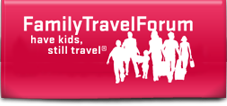
nickonwine: An engaging, interactive wine column by Nick Passmore, Artisanal Editor, Four Seasons Magazine; Wine Columnist, BusinessWeek.com; nick@nickonwine.com; www.nickonwine.com.

MARIANI'S VIRTUAL GOURMET NEWSLETTER is published weekly. Editor/Publisher: John Mariani. Contributing Writers: Christopher Mariani, Robert Mariani, John A. Curtas, Edward Brivio, Mort Hochstein, Suzanne Wright, and Brian Freedman. Contributing Photographers: Galina Stepanoff-Dargery, Bobby Pirillo. Technical Advisor: Gerry McLoughlin.
© copyright John Mariani 2011

